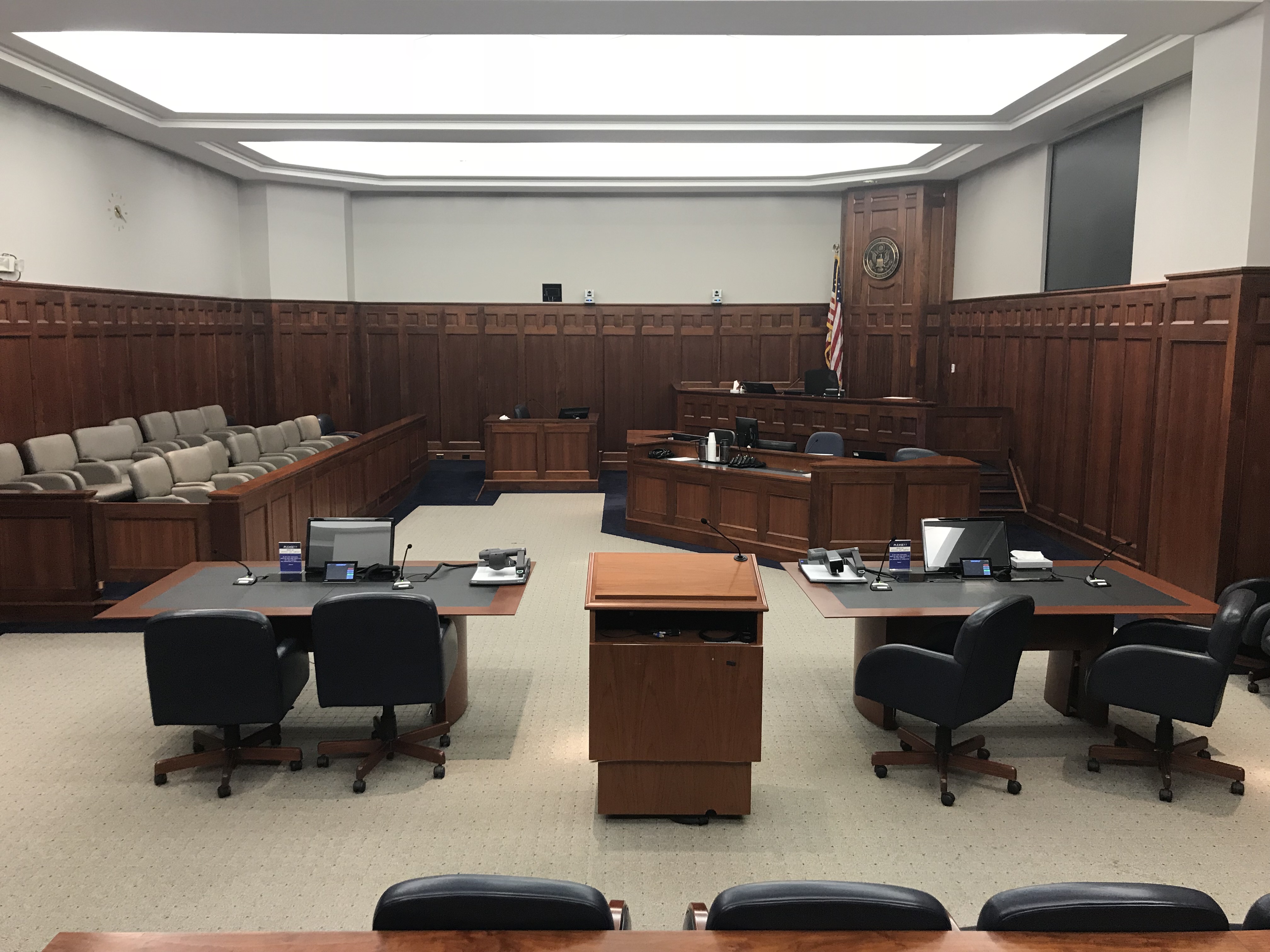Courtroom Technology
Courtroom technology training is required prior to any trial. Training can be scheduled at the final pretrial conference. Counsel must make arrangements with the Clerk’s Office Automation Department by sending an email to: iandml_helpdesk@iand.uscourts.gov. Counsel is also required to test their presentations and equipment prior to trial. An appointment can be scheduled with the Clerk's Office Automation Department. ***Not all technology is compatible and it is recommended that you have a backup plan in case of an unforeseen power, hardware or software problem.***
Equipment Available in Cedar Rapids and Sioux City Courthouses:
| A/V Control Touch Panels | LCD Evidence Digital Monitor |
| Evidence Annotation System | Real-Time Transcription (fee applies, advance notice required) |
| Evidence Document Camera | Teleconference System |
| Evidence Projector System | Telephonic Interpreter Phone with Headset |
| HDMI and VGA Connections for Laptop CD/DVD Playback | Video Conference System |
| Lavalier Microphones | Wireless 2-Channel Interpreter Headsets |
Cedar Rapids Courthouse:
Courtroom 1 Courtroom 3


Courtroom 2 Courtroom 4


Sioux City Courthouse:
Courtroom 1 Layout Courtroom 3 Layout
Magistrate Courtroom (1st Floor) Donald E O'Brien Courtroom (3rd Floor)


